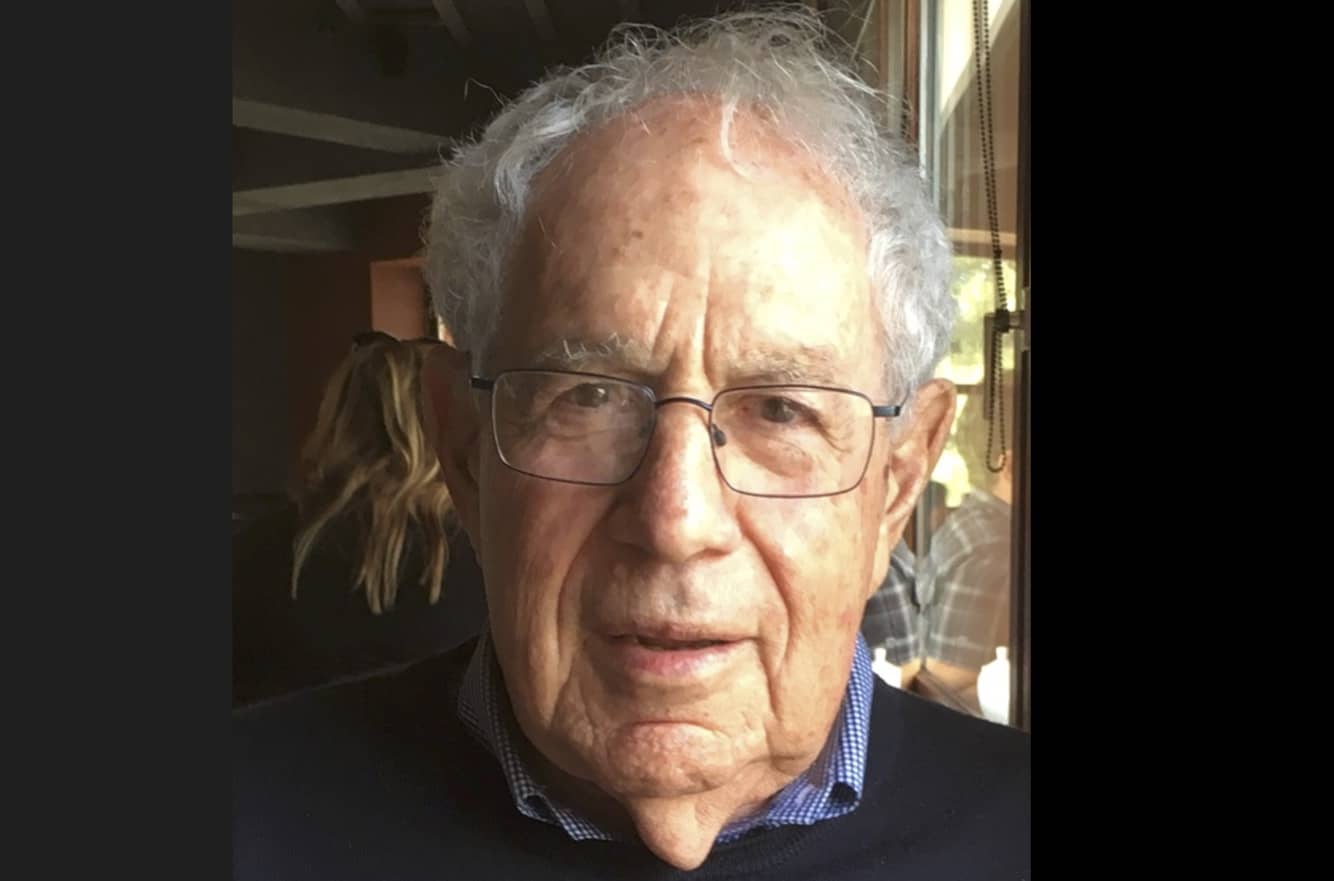
www.buildingsandcities.org/insights/news/richard-bender.html
Remembering Richard Bender

Andrew Rabeneck reflects on the recent passing of Richard Bender, dean emeritus of the College of Environmental Design, University of California Berkeley
Professor Richard
Bender (1930 - 2022) was an educator, architect and planner with a
practice specializing in urban and community planning, town planning, campus
planning and the planning and replanning of obsolete and damaged industrial and
waste sites.
I met first Richard (Dick) Bender in 1969 in Berkeley - we became lifelong friends. He was a Harvard-educated architect and planner who had been teaching at Cooper Union in New York. Gerald McCue, then chair of the University of California Berkeley's College of Environmental Design (CED), recruited him to come to teach at CED. McCue had succeeded the architect Charles Moore who, although he had attracted some wonderful teaching staff including Ezra Ehrenkrantz, Christopher Alexander, Horst Rittel and others, was not a strong manager, and the school was getting big and unwieldy; it needed firm and imaginative management. Dick was soon appointed chair of architecture and then dean of CED, where he skillfully and sympathetically kept the unruly faculty mostly on side. He and his wife Sue brought a strong whiff of East Coast sophistication to laid back Berkeley.
Dick was particularly impressed with Ehrenkrantz's bold initiatives to reshape America's building industry on which I too was working. Dick was on the National Commission on Urban Problems and New York Mayor Lindsay's housing task force, making him a strong ally for Ehrenkrantz in gaining the attention of Housing and Urban Developent (HUD) and other government organisations such as the Institute for Applied Technology at the then National Bureau of Standards, then headed by Donald Schon. Dick became a valuable adviser to Ehrenkrantz throughout George Romney's (Secretary of State at HUD 1969-73) ill-fated Operation Breakthrough program.1
Later during the 1980s and 1990s, after I had returned from America, Dick would often come to London in his capacity as "GC-5" Professor of Urban Design and Construction at Tokyo University. The position was funded by Japan's largest contractors, and they visited to understand what was happening at Canary Wharf and in the City of London. We also stayed in touch through John Parman who worked closely with Dick as he or they consulted or advised on master plans for University of California campuses, including Berkeley, Davis, Merced, San Diego and Santa Cruz. Dick, John, and Emily Marthinsen, the former Berkeley Campus Architect, wrote extensively on Berkeley as a university city. (John Parman was also the co-founder and publisher of the Design Book Review2 to which I contributed quite frequently.)
Dick's unique gift was a strong diagnostic sense, like a great doctor. He could quickly understand the essence of a plan or project and then give sound advice that people were happy to take on board. He frequently spotted things others overlooked, particularly about a project's impact on the surrounding city. He became a valued contributor to selection panels for important projects both in Japan and in America, such as the Getty Centre in Los Angeles.
I visited with Dick and Sue on yearly visits to the Bay Area, until 2019. We kept up a vigorous correspondence about technology and the globalisation of construction until just last year. I shall miss him very much, as will a worldwide network of "friends of RB," including students from Berkeley and Cooper Union, and collaborators sharing his many interests.
Notes
1. Bender, R. & Wilson, F. (1973). A Crack in the Rear View Mirror: A View of Industrialized Housing. New York: Van Nostrand Reinhold. This book unpicks the Operation Breakthrough program in a perceptive way, analysing various attempts at industrialised housing.
2. Design Book Review https://johnjparman.medium.com/re-design-book-review-1983-2002-4dd0bc4859dd
Latest Peer-Reviewed Journal Content
Designing for pro-environmental behaviour change: the aspiration–reality gap
J Simpson & J Uttley
Lifetimes of demolished buildings in US and European cities
J Berglund-Brown, I Dobie, J Hewitt, C De Wolf & J Ochsendorf
Expanding the framework of urban living labs using grassroots methods
T Ahmed, I Delsante & L Migliavacca
Youth engagement in urban living labs: tools, methods and pedagogies
N Charalambous, C Panayi, C Mady, T Augustinčić & D Berc
Co-creating urban transformation: a stakeholder analysis for Germany’s heat transition
P Heger, C Bieber, M Hendawy & A Shooshtari
Placemaking living lab: creating resilient social and spatial infrastructures
M Dodd, N Madabhushi & R Lees
Church pipe organs: historical tuning records as indoor environmental evidence
B Bingley, A Knight & Y Xing
A framework for 1.5°C-aligned GHG budgets in architecture
G Betti, I Spaar, D Bachmann, A Jerosch-Herold, E Kühner, R Yang, K Avhad & S Sinning
Net zero retrofit of the building stock [editorial]
D Godoy-Shimizu & P Steadman
Co-learning in living labs: nurturing civic agency and resilience
A Belfield
The importance of multi-roles and code-switching in living labs
H Noller & A Tarik
Researchers’ shifting roles in living labs for knowledge co-production
C-C Dobre & G Faldi
Increasing civic resilience in urban living labs: city authorities’ roles
E Alatalo, M Laine & M Kyrönviita
Co-curation as civic practice in community engagement
Z Li, M Sunikka-Blank, R Purohit & F Samuel
Preserving buildings: emission reductions from circular economy strategies in Austria
N Alaux, V Kulmer, J Vogel & A Passer
Urban living labs: relationality between institutions and local circularity
P Palo, M Adelfio, J Lundin & E Brandão
Living labs: epistemic modelling, temporariness and land value
J Clossick, T Khonsari & U Steven
Co-creating interventions to prevent mosquito-borne disease transmission in hospitals
O Sloan Wood, E Lupenza, D M Agnello, J B Knudsen, M Msellem, K L Schiøler & F Saleh
Circularity at the neighbourhood scale: co-creative living lab lessons
J Honsa, A Versele, T Van de Kerckhove & C Piccardo
Positive energy districts and energy communities: how living labs create value
E Malakhatka, O Shafqat, A Sandoff & L Thuvander
Built environment governance and professionalism: the end of laissez-faire (again)
S Foxell
Co-creating justice in housing energy transitions through energy living labs
D Ricci, C Leiwakabessy, S van Wieringen, P de Koning & T Konstantinou
HVAC characterisation of existing Canadian buildings for decarbonisation retrofit identification
J Adebisi & J J McArthur
Simulation and the building performance gap [editorial]
M Donn
Developing criteria for effective building-sector commitments in nationally determined contributions
P Graham, K McFarlane & M Taheri
Join Our Community

The most important part of any journal is our people – readers, authors, reviewers, editorial board members and editors. You are cordially invited to join our community by joining our mailing list. We send out occasional emails about the journal – calls for papers, special issues, events and more.
We will not share your email with third parties. Read more



Latest Commentaries
COP30 Report
Matti Kuittinen (Aalto University) reflects on his experience of attending the 2025 UN Conference of the Parties in Belém, Brazil. The roadmaps and commitments failed to deliver the objectives of the 2025 Paris Agreement. However, 2 countries - Japan and Senegal - announced they are creating roadmaps to decarbonise their buildings. An international group of government ministers put housing on the agenda - specifying the need for reduced carbon and energy use along with affordability, quality and climate resilience.
Building-Related Research: New Context, New Challenges
Raymond J. Cole (University of British Columbia) reflects on the key challenges raised in the 34 commissioned essays for Buildings & Cities 5th anniversary. Not only are key research issues identified, but the consequences of changing contexts for conducting research and tailoring its influence on society are highlighted as key areas of action.